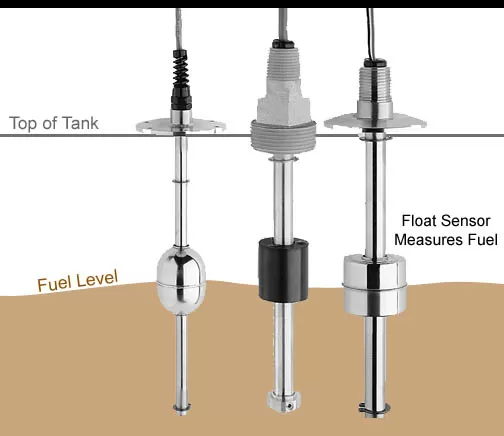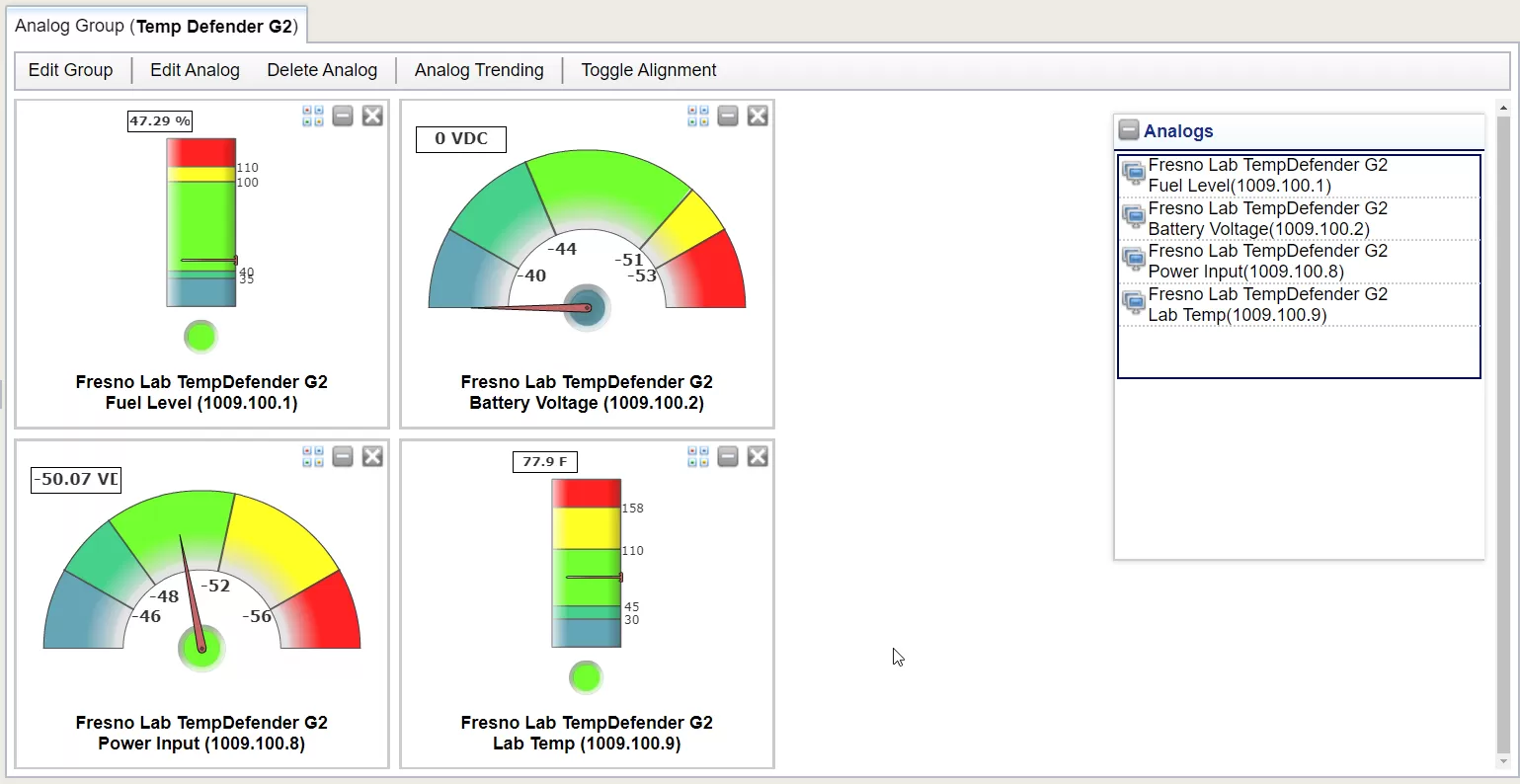Check out our White Paper Series!
A complete library of helpful advice and survival guides for every aspect of system monitoring and control.
1-800-693-0351
Have a specific question? Ask our team of expert engineers and get a specific answer!
Sign up for the next DPS Factory Training!

Whether you're new to our equipment or you've used it for years, DPS factory training is the best way to get more from your monitoring.
Reserve Your Seat TodayAt DPS, our T/Mon remote site management server communicates with a wide range of equipment. With our focus on telecom site monitoring, that naturally includes equipment related to fiber, IP, microwave radios, and similar communication technologies.
Every telecom system depends on a reliable power source, so we naturally also monitor power primary and backup power equipment. This includes:
To help clients like you, we frequently add "Device Modules" (templates) for common pieces of equipment. This makes it faster and simpler to start monitoring this equipment quickly.
I reviewed the current list of power gear we monitor and selected some of the best to share with you here:

Although the "Generac was the first to engineer affordable home standby generators", we encounter Generac in a telecom context mostly related to their industrial generators. In fact, there's actually a Generac system in use at DPS HQ to provide backup power.
According to their website:
"At Generac, we work hard to provide innovative power solutions for a variety of commercial, industrial and life critical applications. With diverse generator options, high-tech mobile products as well as cutting-edge transfer switches and accessories complementing a distinguished product catalog, we make sure power is always available to our consumers and their businesses, whether their office is indoors or on a remote construction site."
T/Mon device modules in the Generac category include the "Generator100". As with many generators, communication is commonly accomplished using the MODBUS protocol.

Cummins makes a wide range of power products. At DPS, we mostly interact with their generators at client sites (like cellular and microwave towers).
According to their website:
"Our power system products include diesel and gas-powered generator sets ranging from 15 - 3750 kVA, alternators, diesel engines ranging from 49 - 5,500 hp, generator-drive engines, battery storage systems and integrated power systems that combine generator sets, paralleling controls and switchgear technologies, all connected to our industry-leading digital solutions for complete power system control."
In particular, T/Mon includes a device module for the PC 500, which is the PowerCommand Cloud Remote Monitoring System.
APC has a huge range of product offerings. As a writer, I recall being thoroughly impressed by their "Currents" magazine. It's essentially a product catalog that looks and reads like a magazine - including "advertisements" for APC equipment.
The list of T/Mon device module list includes APC Metered Rack PDUs, which "provide active metering to enable energy optimization and circuit protection."
T/Mon is also equipped to monitor the PowerNet UPS, which communicates using the SNMP protocol and a provided MIB file.
Rectifiers that transform commercial AC power into DC (commonly 48Vdc) are a big part of almost every remote telecom site.
That's why we created a Device Module for the Alpha Technologies Cordex (48Vdc, 650W). According to Alpha, "The Cordex 650W rectifier is available in a choice of 19in shelf configurations. Either power system option comes complete with distribution, controller, and four rectifiers. With 2.6kW total output per shelf, it is an ideal solution to meet the needs of applications requiring lower power."
There's also a Device Module for the CXPS-E3 Power System. Reading again from Alpha's website, " The E3 is the ideal solution for small to medium-sized 48Vdc applications, providing up to 400 Amps of output current. With universal 19/23" mounting, high temperature operation and high power density, it is the perfect solution for a wide variety of installation scenarios including those in harsh, outdoor environments."
Benning is another popular provider of rectifiers, including the 3000 HD model. As Benning describes, "The TEBECHOP 3000 HD rectifier system combines a compact modular rectifier design with intelligent power features, state-of-the-art technology and load distribution. The result is the 3000 HD rectifier shelf, which offers advanced features making it a perfect choice for data, telecom and outdoor cabinet applications. The 3000 HD is capable of providing -48 V DC power with a load range of 3 kW to 72 kW. "
With the T/Mon Device Module for the 3000 HD rectifier, you can collect 95 different intrinsic alarm points like:
Eltek has a broad range of rectifier with single-letter designations. These included the "Smartpack S" and "SmartPack R".
As an example:
"The Smartpack S covers all control and monitoring needs of small to medium telecom and industrial DC power systems. Status and configuration is fully available through the display locally, or through the ethernet plug both remote or locally."
The "Valere" line is also available. On a T/Mon, you can monitor 20 important alarm conditions from a connected Valere system, including:
"The NetSure 211 Series, a compact -48 volt 120 A DC power solution, features an advanced control unit, up to (6) positions for 1000 W high-efficiency eSure rectifiers, and integrated distribution options."
NetSure battery cabinets are designed and built for small DC power systems.
T/Mon's Device Module includes nearly 30 "module options" to select, depending on your configuration. These include:
T/Mon has another Device Module for the 5200 Series of the ASCO Digital Power Meter. This commonly includes the 5210 model.
T/Mon has 3 Device Modules to cover ICT equipment:
For the Distribution Panel, T/Mon can automatically collect 8 discrete alarms, plus 48 analog levels and threshold alarms, including:
The LaMarche LTI Switchmode Inverter is "equipped with standard features such as sine wave output, voltage regulation, under/over-voltage conditions, and overload protection."
The alarm points that your T/Mon master station will monitor from the LTI include:
You'll also get an assortment of analog readings (continuous-range values):
Lester is a partner with NRS (National Railway Supply). T/Mon is capable of monitoring the NRS Charger.
T/Mon's Device Module collects 16 different discrete alarms, including AC Input Power Lost, Battery Temperature High, Remote DC Voltage Sensing Fault, UIM Fault, iPM Fault, and iPM Incorrect DC Voltage.
Now that we've gone through a list of power products (rectifiers, generators, & UPS systems), let's consider how T/Mon related to each one.

T/Mon is a multi-protocol alarm manager that can collect alarms from many different sources. Over its 30-year history, T/Mon has evolved to bring more and more equipment under your monitoring umbrella.
It all started with parallel handling of multiple interfaces (multiple modems, multiple serial ports, etc.). In the age of IP and many competing protocols, T/Mon grew to handle those - including unsupported legacy protocols and the closed proprietary protocols of other companies.
The many T/Mon Device Modules I discussed above are the latest evolution in this trend. Most modules are built around a standard protocol, like MODBUS or SNMP. Unfortunately, there's nothing standard about specific alarm implementations from one manufacturer to another.
Where one rectifier manufacturer might have 96 different discrete alarms and 8 analog values, another might have more or fewer of entirely different alarms. At the very least, they'll have different names and ID numbers.

Device Modules in T/Mon, which act as a kind of "blueprint" for instantiating a new device to be monitored, remove this headache. With its growing collection of modules, T/Mon arrives pre-equipped to handle every alarm from a growing number of third-party devices. In most cases, you just add the IP address of the device and begin polling.
As you can see, T/Mon didn't always have a big number of Device Modules to add device support. Each and every module had to be created.
At DPS, you play a big role in helping sculpt the future of our entire product line. Need something new that no one else can support? The DPS Engineering Team can very likely help you do it.
In the case of T/Mon and Device Modules, you'll generally start by approaching us about your general requirement for a central master station. We'll talk about how T/Mon can collect data, display alarms on lists and maps, send email alerts, generate reports, etc.
Once we've established that T/Mon has the core functions you want, then our goal becomes to get as much data into your proposed new T/Mon as possible. This depends on being compatible with as many of your important devices as possible.
Therefore, if you have a device where we don't currently have a T/Mon Device Module, we have an established process to make it for you.
First, I should note that you can always opt to modify T/Mon modules on your own. The PHP scripting that associates incoming alarms (like SNMP OIDs or MODBUS registers) to internal alarm points is fairly simple. If you have someone on your team who qualifies as even an intermediate programmer, you might decide to copy and modify a module to suit your needs. It's not a complicated process, but it does take a moderate amount of time to complete.
If you're like most DPS clients, however, you'll opt to have DPS Engineering build modules for you so you can keep focusing on your other important work. I commonly find that roughly 80% of devices that will be monitored by a new T/Mon are covered by an existing Device Module. For the remainder, we will generally assign a price of $2,000-$4,000 to create a new module, depending on the required complexity.
There's an old maxim in network management that you should never trust a device to monitor itself. Don't mistake the meaning of that phrase, though. It's always a great idea to bring in as much data as you can, as long as your central master server is smart enough to consolidate alarm clutter.
So, you absolutely should take in SNMP traps, MODBUS register values, and other native "self-monitoring" that your equipment has available.
What you should also do is bring complementary data in via an RTU (ex. a NetGuardian). Many devices, even as they've shifted to LAN or IP protocols, still have a least a few contact closure outputs. Even if they're just summary severity alarms (ex. "Critical", "Major", "Minor", "Status"), you create an important backstop when you bring those in with a hardware RTU.
Also, remember that newer RTUs, including the G6 model of the NetGuardian 832A & HVAC Controller, are capable of handling both MODBUS/SNMP protocols AND traditional discrete contact closures. That can enable you to collect data from multiple input types in one unified location.
Remote monitoring systems for large, important operations must be customized, a least in terms of product selection.
Just give me a call here and tell me what you're trying to accomplish. We can walk through your equipment list and tally up the required inputs and Device Modules you need. Not every system will involve both T/Mon and NetGuardians. Some only need one or the other.
It's always great if you have a concise list of equipment when you call, but don't hesitate if you don't. Having our first conversation together will help you to understand the relevant data you need to collect. It's entirely normal for me to send you a PDF proposal (tech diagrams & a price quote) that must be revised later. In fact, some of my best projects can see five or more revisions until everything is perfect and your whole team agrees to the purchase.
To get started now, give me a call at 1-800-693-0351. You can also send me email at sales@dpstele.com

Andrew Erickson
Andrew Erickson is an Application Engineer at DPS Telecom, a manufacturer of semi-custom remote alarm monitoring systems based in Fresno, California. Andrew brings more than 19 years of experience building site monitoring solutions, developing intuitive user interfaces and documentation, and opt...